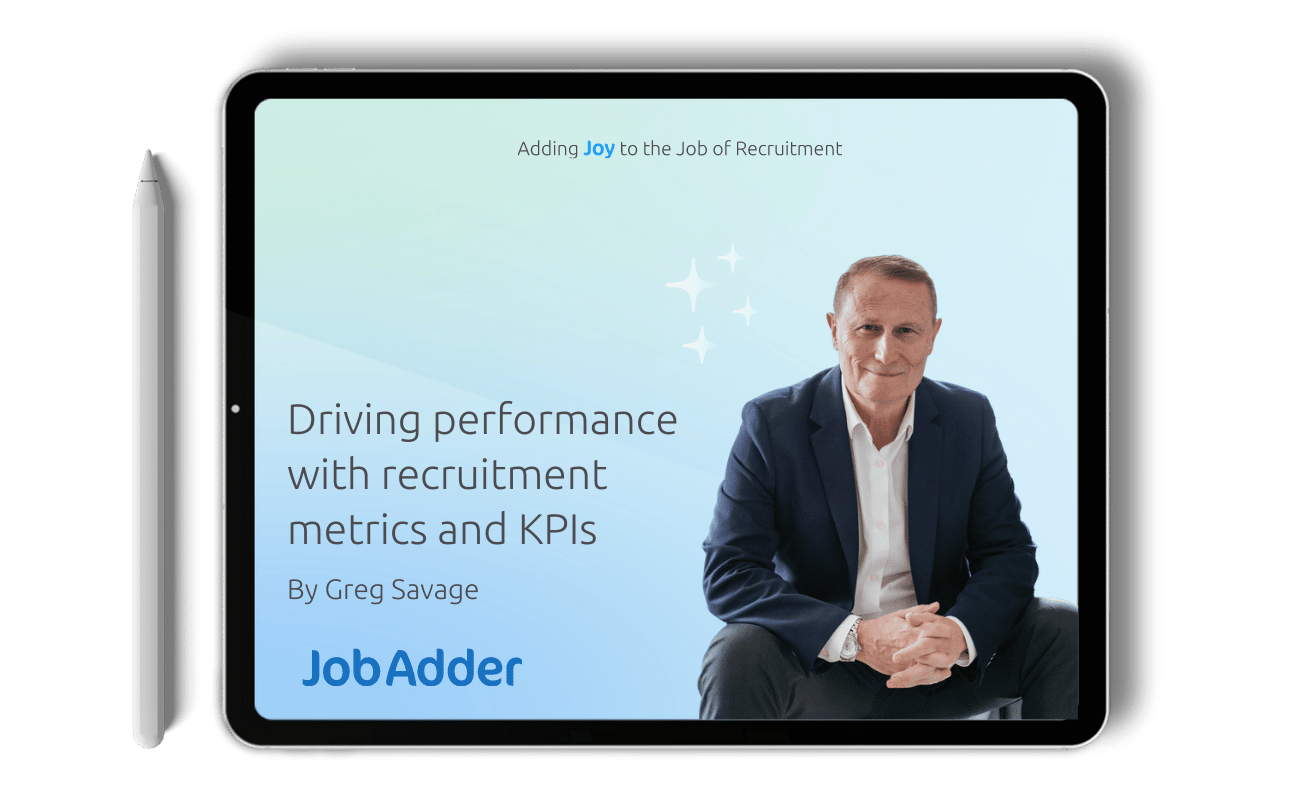Recruitment Blog
Data-driven recruitment: Using metrics to create a more effective recruitment process

One of the most significant challenges recruiting teams can face is the hiring process itself, as substandard hiring decisions can result in negligent performance and high turnover rates.
Adopting data-driven recruitment can help companies avoid human errors during hiring. A hiring process that incorporates advanced data analytics can streamline recruiters’ hiring decisions by eliminating the need to rely on human intuition and guesswork.
Some long-term benefits of data-driven recruitment include reduced rehiring costs, increased productivity and improved work culture.
Read on to learn more about data-driven recruitment and how it could transform the way you hire.
What is data-driven recruitment?
Data-driven recruitment is all about measuring, collecting and analysing candidate data into something quantifiable. Companies use data to compare and analyse their talent pools for qualified candidates in a cost-effective and time-saving way.
Traditional recruiting relies on human intuition and “gut feeling,” while recruitment data and HR analytics work to provide the best return on investment by reducing the chance of bad hires.
Although our intuition is sometimes accurate, data can aid in decision making, increasing the likelihood that your talent acquisition team hires the right person for the job.
Proper integration and analysis are necessary for data to improve a company’s recruitment process. Effectively integrated and analysed data differs from company to company, but recruitment metrics should provide predictions, consistency, comparability and internal performance standards.
The benefits of data: How can data help your recruitment strategy?
There are endless possibilities with data, but when it comes to your recruitment strategy, there are invaluable ways data can help your hiring teams make the right decisions while consistently improving your recruitment processes.
With adequate data, your recruitment strategy can benefit in these ways:
- Improves your quality-of-hire: The quality of new hires is a strong indicator of a company’s success. Quality-of-hire measures the value that new employees bring to your company through a myriad of ways, depending on a company’s objectives. For example, you can evaluate new hires by measuring productivity, performance, coworker satisfaction, customer ratings or sales quotas.
- Lowers hiring cost: Bad hiring decisions subsequently lead to expensive losses, a problem that data-driven recruitment works to avoid. Even a few poorly chosen new hires can cause productivity loss, resulting in incurred expenses and wasted time that could be used to hire another employee.
- Reduces time to hire: Recruitment data empowers organisations to identify and target the most promising candidates efficiently, streamlining the selection process and reducing time to hire. By analysing historical hiring patterns and candidate interactions, data-driven insights enable recruiters to make informed decisions, accelerating the overall recruitment timeline.
- Reduces new hire turnover rate: New employee retention and engagement are essential metrics that data-driven recruitment can provide. Data helps reduce your new hire turnover rate by guiding you to hire the best candidate at the right time and in the correct position. In addition, candidates placed in the proper role are less likely to quit within the first three months of employment.
- Increases job offer acceptance rates: A candidate’s decision to accept a job is an essential factor affecting the recruitment process. With metrics, hiring teams can determine whether or not your company is extending offers to suitable candidates.
- Helps forecast hiring needs: Data can help companies develop new strategies for immediate and future hiring needs. For example, with increased knowledge of employee turnover, hiring bottlenecks, etc., you can predict the exact time frame of when to recruit new hires.
- Lessens hiring bias: Data of current and past employees can highlight possible biases by providing insight into the limitations of human intuition. Taking some human error out of the equation can ensure fair hiring practices and determine if there are discriminatory practices within your recruitment process.
- Expanded understanding of recruitment channels: Do you get the best quality hires from LinkedIn or referrals? Or perhaps a particular industry-specific job board? Understanding the effectiveness of your recruitment channels is essential.
- Enhances candidate experience: Companies can collect data and candidate feedback on things like the career page, job postings, interview experience, job offer acceptance rates and application experience to improve the candidate experience.
How to effectively implement data into your recruitment process
If you want to implement an effective data-driven recruitment approach, you have to make sure you’re tracking the right data.
The data you collect should reflect your overall objectives and goals for improving your recruitment strategy and processes. All companies are different, the data you track and examine might be very different to the data another company explores.
It’s important to note that data is only effective if companies perform regular evaluations to understand the successes and failures of their recruitment objectives and adjust accordingly.
Through regular evaluations, you can ensure that you’re focused on specific data that reflects your recruitment objectives.
Choosing the right metrics to track
A company’s decision to track one recruiting metric over another depends on its recruitment objectives. With the variety of metrics companies can focus on, it might be challenging to determine which data sets will improve your hiring process.
For example, if a company wants to double-check its recruitment channels for quality, it should track “sourcing channel efficiency” data for new hires. Or, if a company wants to reduce hiring costs, it should track cost-per-hire and time-per-hire data.
To determine the most critical metrics to track for data-driven recruitment, talk to your managers about your hiring process as it currently exists. Then ask, what are their concerns? Where can additional insights help strategy?
Other common data points for companies to track are:
- Quality-of-hire: By leveraging data from past hires and their subsequent performance, organisations can identify patterns of success and refine candidate profiles, leading to better matches between job requirements and applicant qualifications.
- Cost-per-hire: Data analysis allows companies to track the performance of various recruitment channels and sources. By identifying which sources yield the most cost-effective hires, organisations can allocate their budget more efficiently towards those channels.
- Time-per-hire: Data-driven insights can uncover bottlenecks in the hiring process, pinpointing areas where delays commonly occur. This allows companies to streamline their procedures, eliminate unnecessary steps and expedite decision-making for faster hiring.
- New employee retention: By analysing the characteristics of employees who have stayed with the company over time, organisations can identify traits associated with higher retention rates. This information can then inform the selection process, increasing the likelihood of hiring candidates who are a good cultural and professional fit.
- Time to productivity: Utilising data on candidates’ prior roles, experiences and skills, companies can assess their potential to contribute quickly to the new position. This informed decision-making reduces the time it takes for new hires to become fully productive after the onboarding process.
- Recruitment conversion rate: Data analysis can reveal which aspects of the recruitment process are most effective in converting potential candidates into actual hires. This knowledge enables organisations to fine-tune their recruitment strategies, emphasising the tactics that yield higher conversion rates.
Integrating data to improve hiring decisions
Hiring teams can use data analytics to make decisions that promote overall company improvement.
Pressure on HR managers and hiring teams to justify their decisions and continuously make the correct decisions suggests that big data is the answer.
However, even if data-driven recruitment is the answer to improving your company’s recruiting process, effectively integrating said data into your hiring workflow may seem daunting.
Collecting and analysing data
Collect and analyse data with an Applicant Tracking System (ATS) or recruitment software to speed up your hiring process.
An ATS automates the candidate sourcing and hiring process, saving you at least 10 hours a week compared to non-automated options. It removes time-consuming manual tasks and ensures your data is all in one system, ready to explore and analyse.
A company should collect and analyse data throughout the recruitment funnel. This data could include the number of applications received, unique website visitors, the number of interviews conducted, how many candidates progress to the final round and the number of accepted offers, creating a robust collection of recruitment data.
Using data to inform hiring decisions
An important way to start utilising data-driven recruitment is to only concentrate on metrics that support your company’s objectives, instead of trying to control everything by collecting every variation of data possible, which can be counter-productive.
Data can help confirm suspected issues in your hiring processes, explain why a particular method isn’t working or reveal unforeseen problems.
You may want to prioritise improvement efforts based on known hiring issues or where a problem is particularly glaring. For example, if you think the company should invest in a specific recruiting activity, but you’re struggling to justify your reasoning, data might be the answer. Or, if you find that your job offer acceptance rates are low, you may want to concentrate efforts there.
It’s important to remember that data isn’t always the answer. Sometimes, HR managers and hiring managers need to step away from the numbers and realise a problem could be related to company culture or values—something that might not show up in data.
Frequently asked questions
How do you collect data for recruitment?
Data for recruitment is collected through various channels, including the application process, social media and tracking the source of hire, enabling insights into demographics and potential candidates.
What are the 3 P’s of recruitment?
The framework of the 3 P’s of recruitment – Plan, Prepare, and Pursue – forms a strategic roadmap that organisations follow to enhance their hiring endeavours. In the planning phase, companies meticulously outline their staffing needs and craft a comprehensive hiring strategy.
During preparation, they fine-tune job descriptions, streamline interview processes and establish evaluation criteria. The pursuit phase involves actively engaging with candidates, leveraging these prepared resources to attract top-tier talent, ultimately leading to improved retention rates as the chosen candidates are well-aligned with the organisation’s requirements and expectations.
What are recruitment metrics?
Recruitment metrics encompass measures like source of hire, time to hire, quality of hire, retention rate and demographics, providing quantifiable insights into the success of hiring initiatives and supporting a data-driven approach.
Are recruitment agencies considered data processors?
Recruitment agencies play a dual role as potential data processors, managing candidate data while assisting companies in their pursuit of skilled professionals. As these agencies navigate the talent search process, they inherently align with a data-driven hiring approach by leveraging insights from candidate information.
By effectively processing and analysing this data, recruitment agencies can provide tailored recommendations, enhancing the precision and success of the hiring process for their clients.
Streamline your hiring process with JobAdder
Overall, implementing a data-driven recruitment approach can minimise errors, provide streamlined metrics and encourage informed decision making. In addition, data-driven recruitment provides significant long-term benefits like reduced rehiring costs and increased productivity.
As a company committed to providing streamlined data for its clients and their candidates, we offer a range of solutions within our Applicant Tracking System, like recruitment analytics, automated job posting, integrated candidate sourcing and task management. To find out more, reach out to our friendly team today.
Want to better track your recruitment metrics and KPIs? Greg Savage breaks it down…

Related blog posts

To excel in the competition for top talent, proactive workforce planning is essential. Traditional methods struggle to adapt to evolving …
Ready to get started?
Talk to one of our friendly team members



